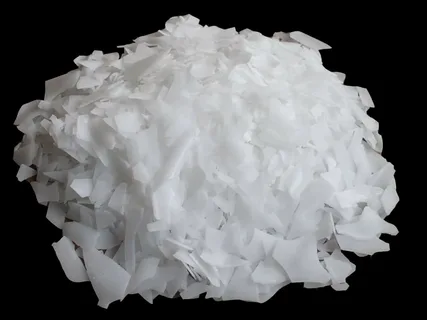Polyethylene Wax Market driven by industrial applications and innovation in production

The Polyethylene Wax Market is gaining momentum worldwide, driven by its widespread industrial usage and evolving innovation across production methods.
Introduction: Industrial Relevance of Polyethylene Wax
Polyethylene wax (PE wax) is a low molecular weight polymer that provides unique benefits like thermal stability, chemical resistance, and improved surface properties. These features make it highly useful in industrial applications such as plastic processing, rubber manufacturing, coating formulations, and ink production.
As industries evolve to meet higher efficiency and quality standards, the demand for tailored PE wax products is growing. This trend is also supported by continuous advancements in production technologies that offer better control, purity, and customization.
Key Industrial Applications Fueling Demand
The versatility of polyethylene wax is central to its increasing adoption across multiple industries:
1. Plastics Industry:
PE wax acts as a processing aid and lubricant in plastic manufacturing, especially in PVC and masterbatches. It enhances extrusion flow, prevents sticking, and stabilizes thermal profiles.
2. Rubber Processing:
It functions as a release agent in rubber molds and improves the uniformity of rubber compounds. This is crucial for tires and technical rubber goods.
3. Coatings and Inks:
PE wax improves scratch resistance, gloss, slip, and rub resistance in coatings and inks. It’s widely used in automotive coatings, printing inks, and wood finishes.
4. Hot-Melt Adhesives:
In adhesives, it balances viscosity and setting time while improving bond strength. It’s particularly popular in packaging and woodworking applications.
5. Textiles and Polishes:
PE waxes are used for their softening and gloss effects in textile finishes and floor or car polishes.
The continued expansion of these industries directly fuels demand for high-performance polyethylene wax.
Innovations in Production Techniques
To meet growing industrial demand and enhance performance, producers are adopting innovative production technologies. These include:
1. Controlled Polymerization:
Advanced polymerization allows manufacturers to create waxes with specific molecular weights and melting points, improving suitability for diverse industrial tasks.
2. Oxidation Technology:
Oxidized PE waxes offer improved emulsifiability and adhesion, ideal for inks and coatings. Producers use controlled oxidation to achieve desired acid values and hardness levels.
3. Fischer-Tropsch Synthesis:
This method yields ultra-pure waxes with narrow molecular distribution, suitable for demanding applications in food packaging or sensitive coatings.
4. Micronization and Blending:
Micronized waxes provide superior dispersion in liquids, while blending techniques allow for the creation of composite waxes with enhanced functionality.
These innovations not only improve product performance but also enable companies to offer customized solutions for specific industrial needs.
Role of Automation and Smart Manufacturing
Automation in production facilities is streamlining operations and reducing costs. Smart manufacturing tools like process monitoring, real-time analytics, and automated blending ensure consistent quality and reduced waste.
Manufacturers are also implementing eco-efficient technologies to minimize emissions and energy consumption, aligning with sustainability goals while maintaining product standards.
Impact of R&D and Collaboration
Research and development play a crucial role in advancing the polyethylene wax market. Companies are increasingly collaborating with industrial clients to co-develop wax grades that meet niche requirements.
Some areas of innovation include:
-
Heat-stable waxes for high-temperature processing
-
Water-based wax emulsions for environmentally friendly coatings
-
Biodegradable and plant-based alternatives for greener solutions
This client-centric innovation model allows companies to stay ahead in a competitive market while addressing evolving industrial demands.
Regional Production and Supply Dynamics
Production hubs for PE wax are concentrated in regions with high industrial activity:
Asia-Pacific:
China, India, and South Korea lead regional production, with rising domestic demand from plastic, packaging, and textile industries. Local manufacturing is ramping up due to growing consumption and export potential.
North America:
The U.S. houses several advanced PE wax production plants focusing on high-purity and specialty grades. The demand is fueled by industrial-scale coatings and plastics usage.
Europe:
Producers here are focusing on environmentally friendly waxes in response to strict regulations. Innovation in oxidation and emulsification is driving product differentiation.
Latin America & Middle East:
These are emerging production and distribution zones, often dependent on imports but showing interest in setting up local manufacturing units.
Challenges in Scaling Industrial Production
While industrial demand is high, some challenges persist:
-
Fluctuations in raw material (ethylene) prices affect production costs
-
Complex regulations in some regions demand strict quality and safety compliance
-
Investment in new technology is capital-intensive, limiting smaller players
Addressing these issues requires strategic investment, raw material security, and efficient technology deployment.
Outlook for Continued Market Growth
The outlook for the polyethylene wax market remains positive due to:
-
Strong and growing demand from multiple industrial sectors
-
Advancements in production enabling high-performance and cost-efficient products
-
Increasing adoption of environmentally conscious wax options
-
Expansion of application areas such as 3D printing, biodegradable packaging, and smart coatings
With industries prioritizing quality, efficiency, and sustainability, polyethylene wax is well-positioned for sustained growth through 2030 and beyond.
- Art
- Causes
- Crafts
- Dance
- Drinks
- Film
- Fitness
- Food
- Games
- Gardening
- Health
- Home
- Literature
- Music
- Networking
- Other
- Party
- Religion
- Shopping
- Sports
- Theater
- Wellness


